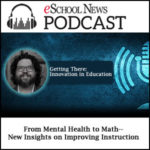The COVID-19 pandemic has certainly thrown education for a loop. Even as classes resumed this past fall, many districts implemented widespread student and teacher quarantines and shifted to virtual learning as new outbreaks and variants emerged.
What new tools, techniques, and innovations should stick around in primary schools even after COVID recedes (whenever that may be)?
Check out this eSchool News webinar and learn from veteran educators who recall their work-around strategies during the massive shift to remote learning. They’ll provide valuable insight and will suggest which tools and strategies should be kept to create new hybrid learning models for younger students.
More from eSchool News
One of the biggest changes educators will see in 2022 is the shift to accelerated learning. Educators have been experimenting with accelerated learning for some time, but in the last year or so, as districts looked for new strategies to address pandemic-related learning losses, organizations like The New Teacher Project have released reports on the effectiveness of the approach.
The pandemic has forced districts to rethink how they communicate with parents, and things aren’t going to go back to the “way they were” anytime soon (if at all). Forced to operate remotely, and without much warning, our district knew it had to move away from snail mail as a primary mode of school-home communication and over to a more modern, fast, and efficient solution.
Here’s a question for you: “What do you think is the most unpopular subject in school?” If you thought the safe answer was math, then you’d be right. According to numerous surveys, mathematics is easily one of the most disliked subjects in school, regularly scoring in the bottom three. I can certainly understand the sentiment. As a student, I didn’t like math much either.
Want to share a great resource? Let us know at submissions@eschoolmedia.com.















